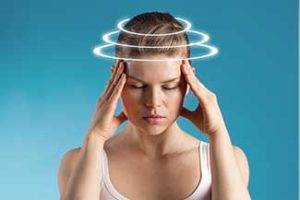
Vision is an important sense for balance, comfort and equilibrium in the body.
There are 3 primary senses that the body uses, which affect dizziness and vertigo: visual, vestibular function and proprioception.
1. Proprioception is the sensation that your brain receives from your entire body which including the feet, ankles and lower body. These sensations signal to your body to make small adjustments as you move through your environment to maintain balance.
Proprioception can be impacted by injury or disease such as diabetes.
2. The vestibular system has two parts: the peripheral system, which includes the inner ear which detects movement of the head, and the central system, the brain connections to the 8th cranial nerve.
This can be impacted by injury, inflammation from an illness, ora disease process.
3. Vision is often overlooked as a contributing factor in people who suffer from dizziness ,or disequilibrium, however vision can and does override the input from the vestibular and proprioceptive system.
For example, have you ever been in a dome theater or in a fun house where a large part of your vision is viewing movement?
In those situations, your body is still but you feel as if you are moving. This is an example of how vision can override the other two systems of balance.
We often see patients who have been referred by their vestibular/physical therapist because they have not gotten better with their current interventions, or their symptoms are discovered to be visual in nature than vestibular.
When we examine these patients we find that they often have abnormalities in their oculomotor (tracking) and binocular(teaming) systems which impact their ability to recover. Once we’ve diagnosed the vision problem, we often recommend prescription glasses that can help the recovery process.
This may involve taking you out of progressive lenses (no-line bifocals) and putting you into single vision glasses which give more clear and stable visual input to the brain, and/or prescribing some prisms which can help reduce dizziness and help ground you as you walk.
Vision Therapy for dizziness and disequilibrium is similar to traditional vision therapy, but with the addition of multi sensory integration.
This means that once your basic visual skills have improved, we will integrate balance, head turns, eye-hand coordination and rhythm into the therapy program to help your body, head and eyes work smoothly together as they were before.
